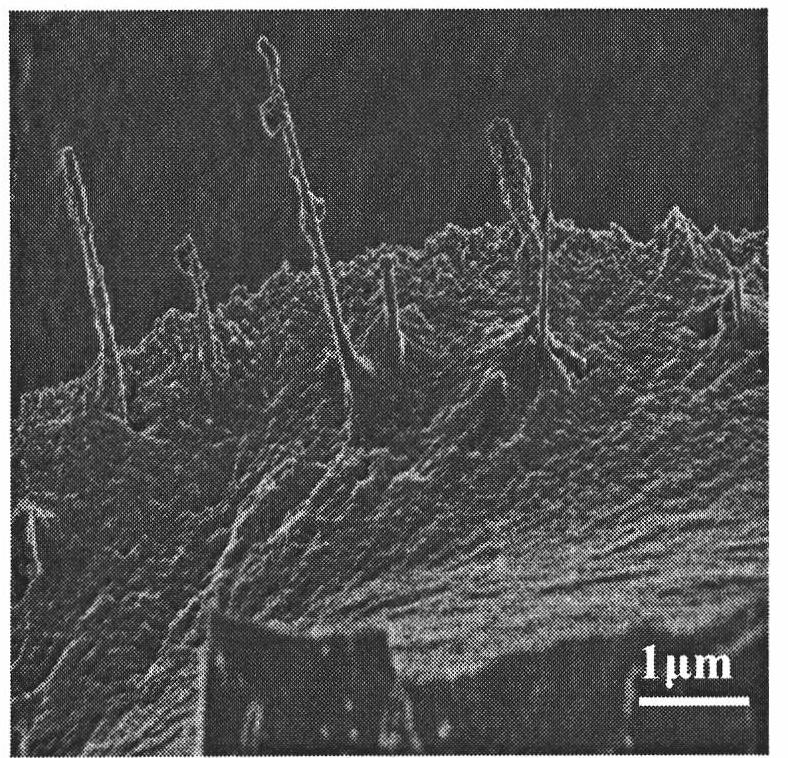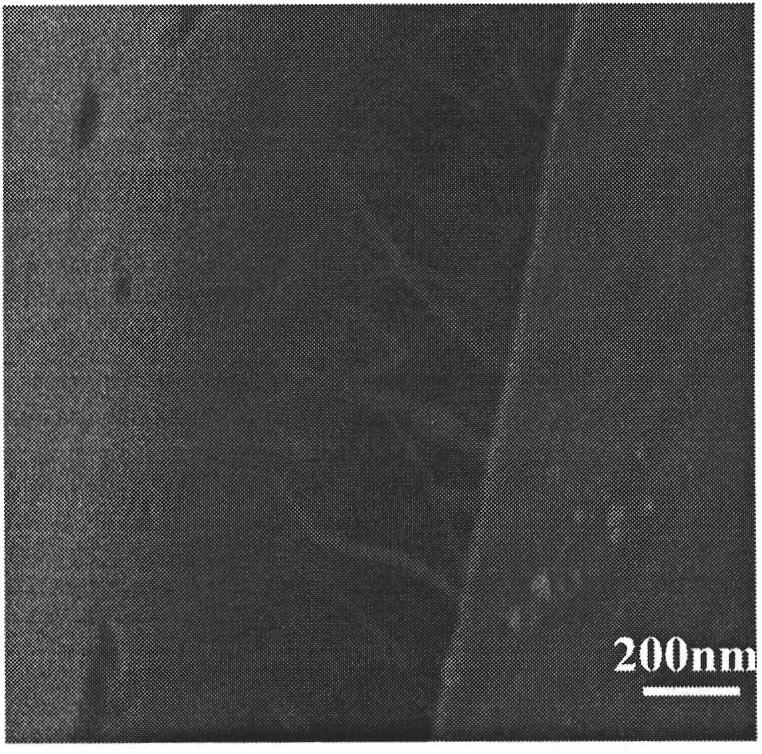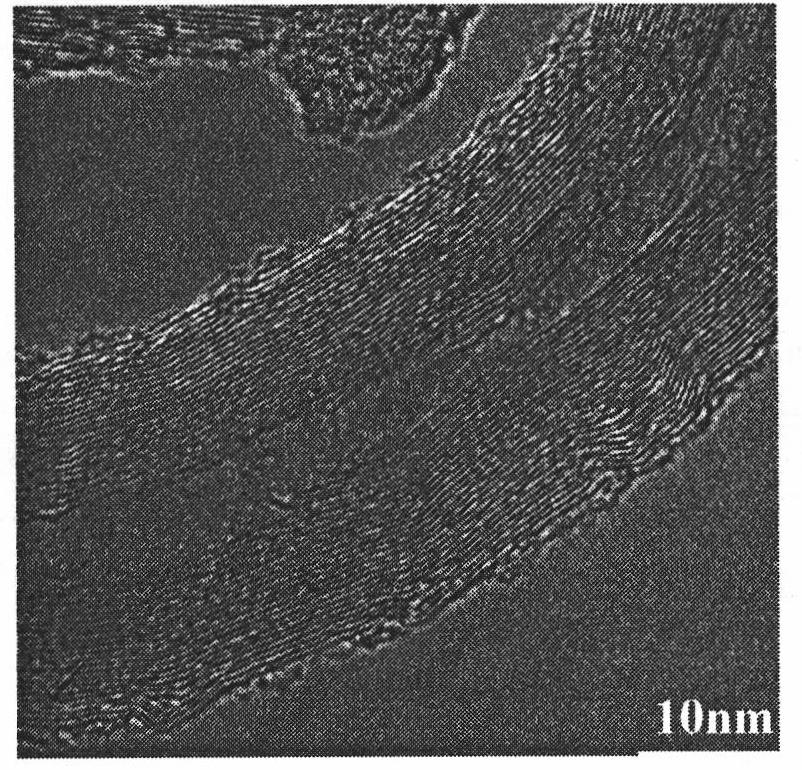Ceramic and carbon nano-fiber composite material and preparation method thereof
A carbon nanofiber and composite material technology, applied in ceramic products, nanostructure manufacturing, nanotechnology and other directions, can solve the problems of difficult to achieve dispersion, easy agglomeration of carbon nanofibers, difficult densification of materials, etc. The effect of simple process
- Summary
- Abstract
- Description
- Claims
- Application Information
AI Technical Summary
Problems solved by technology
Method used
Image
Examples
Embodiment 1
[0032] Example 1: Mix 2g hydrogen-containing siloxane, 1g vinyl cyclotetrasiloxane and 1.5g polydimethylsiloxane, and add 45mg FeCl 3 , Add 45mg platinum catalyst, pour it into the mold, heat at 80℃ for 4h to obtain the shaped body, put the shaped body into the furnace, heat up to 850℃ in argon gas, pass in 15ml / h ethanol to grow carbon tube for 30min, raise the temperature to Pyrolysis at 1000°C for 1 hour to prepare siloxycarbon ceramic and carbon nanofiber composite material. Break the composite material with a blunt tool, and observe the fresh section with a scanning electron microscope. There are many carbon nanofibers detached from the ceramic matrix (attached) figure 1 ). Scanning electron microscopy observed the longitudinal multi-bridged carbon nanofibers in the newly formed cracks in another area of the composite body (attached figure 2 ) To further illustrate the growth of carbon nanofibers in the ceramic body. The observed carbon nanofibers are 5-100nm in diamete...
Embodiment 2
[0033] Example 2: Using the same method as Example 1, FeCl added to the ceramic precursor 3 The amount of the catalyst is reduced to 4.5 mg, and SiOC ceramics and carbon nanofiber composite materials are obtained by pyrolysis.
Embodiment 3
[0034] Example 3: Using the same method as Example 1, FeCl added to the ceramic precursor 3 The amount of the catalyst is reduced to 450 mg, and SiOC ceramics and carbon nanofiber composite materials are obtained by pyrolysis.
PUM
 Login to View More
Login to View More Abstract
Description
Claims
Application Information
 Login to View More
Login to View More - R&D
- Intellectual Property
- Life Sciences
- Materials
- Tech Scout
- Unparalleled Data Quality
- Higher Quality Content
- 60% Fewer Hallucinations
Browse by: Latest US Patents, China's latest patents, Technical Efficacy Thesaurus, Application Domain, Technology Topic, Popular Technical Reports.
© 2025 PatSnap. All rights reserved.Legal|Privacy policy|Modern Slavery Act Transparency Statement|Sitemap|About US| Contact US: help@patsnap.com



